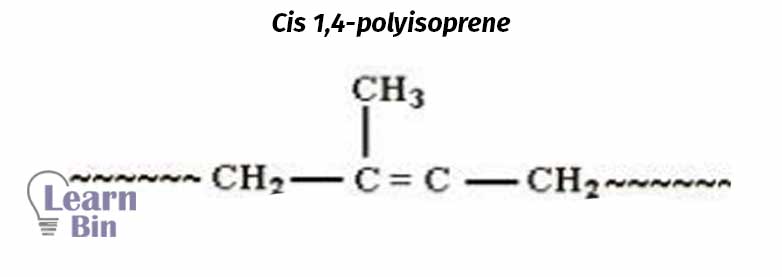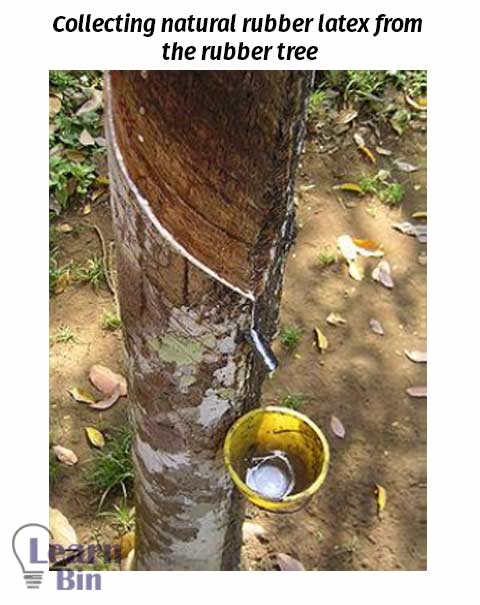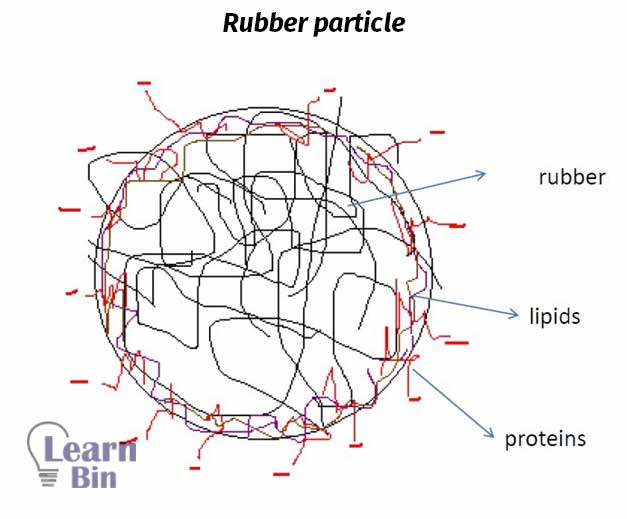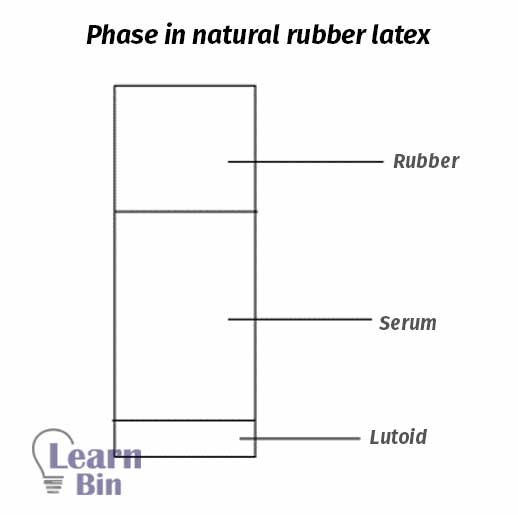More results...


Polymers can be categorized into various categories depending on various factors. Basically, polymers can be divided into three categories “Rubber”, “Plastic” and “Fibers”. Rubber can be synthetic (Butyl rubber, Nitrile rubber) or natural (natural rubber – Cis 1,4-polyisoprene).
Rubber products are again can be categorized into two types as dry rubber products and latex products. The main difference between dry rubber and latex is dry rubber is in dry form and latex is in liquid form. Basically, wet rubber can be known as latex. When considering natural rubber, we can collect rubber latex from the rubber tree (Hevea brasiliensis). It is called fresh latex or field latex.
Latex is a stable colloidal dispersion of a polymeric substance in an aqueous medium. In natural rubber, the polymeric substance is Cis 1,4-polyisoprene.

| Component | Percentage |
| Natural rubber | 30 – 33 % |
| Proteins | 1 - 1.5 % |
| Resinous substances | 1 - 2.5 % |
| Ash | 1 % |
| Water | 60 – 65 % |
Freshly tapped NRL is a white color fluid with a density of around 0.975 -0.98 g/cm3 which is less than the density of water. pH is between 6 -7. Viscosity is variable. The total amount of non-rubber and non-aqueous substances in fresh natural rubber latex is around 5% by weight of the latex.

Natural rubber is hydrophobic. So, they do not dissolve in water. But they are dispersed in rubber latex without floating. An uncountable number of rubber particles are entangled together and make rubber particles. There are non-rubber particles such as lipids and proteins in natural rubber latex (NRL).
Proteins have both hydrophobic parts and hydrophilic parts, and lipids have hydrophobic parts in their molecules. The hydrophobic part (hydrocarbon chain) of the proteins is adsorbed to the rubber particle and the hydrophilic part (mainly the carboxylic groups of proteins) is placed around the rubber particle.
Removing the H+ ions from carboxylic groups makes a minus charge around the rubber particle. So, all the rubber particles in the latex are minus-charged. Due to this minus charge, the rubber particles can properly be dispersed in the aqueous medium and stabilized in the aqueous medium. This stabilization is the “Electrostatic stabilization” of natural rubber latex.
When rubber particles come closer to each other they repulse because of the minus charge. Therefore, these particles are evenly dispersed in the latex and the particles are always moving. This motion is called “Brownian motion”.


NRL consists of three principal phases. Only in fresh latex, we can see these three phases which are the Rubber phase (35%), Aqueous phase (55%), and Lutoid phase (10%). The protein content is distributed among these three phases. 50% of proteins are dissolved in the aqueous phase, 25% are adsorbed on the rubber particles, and 25% are in the lutoid phase.

The top layer is the rubber layer. From its mass there are 86% of the rubber phase is rubber hydrocarbon which exists as rubber particles. In the rubber phase, rubber phase, rubber particles are dispersed in an aqueous medium. They do not separate into two layers because of non-rubber particles. 10% of rubber hydrocarbon is dissolved in water. There are 1% of proteins and 3% of lipids in the rubber phase from its mass. In addition, metal ions such as Mg, K, and Cu are also present in the rubber phase to an extent of 0.05%.
The density of rubber particles is 0.92g/cm3. The protein compound of the rubber phase occurs as an adsorbed layer surrounding the external surface of the rubber particle. α–globulin is the major component of adsorbed proteins. They are (-) charged at the pH of fresh latex.
Three principal types of lipids are present in the rubber phase. Which are
Rubber particles are spherical in shape in young trees. The shape varies to some extent with the age and type of the tree. With the aging of the tree, rubber particle tends to be oval in shape. The size of the rubber particle varies between 20 nm to 5000 nm.
The aqueous phase of fresh NR latex is a dilute aqueous solution. Density around –1.02 g/cm3. It contains many different chemical species.
The principal carbohydrate present in latex is methyl inositol. Its concentration is 1% m/m on the whole latex. In the absence of adequate preservation, the carbohydrates become microbiologically oxidized and form volatile fatty acids such as formic, acetic, and propanoic.
Water-soluble proteins are dissolved in the serum. α–globulin is the major protein present in the serum. The second most protein dissolved in the serum is Hevien.
Other substances that are present in the serum are Free nitrogenous bases, Organic acids, Inorganic anions such as PO43-, CO32-, and Various metal ions such as K, Mg, Fe, Na, and Cu.
In the bottom fraction of the natural rubber latex, there are some particles that are quite different in character from rubber particles. These particles are called Lutoid particles. The lutoid phase mainly consists of water. In addition, it contains some other materials like soluble proteins, Insoluble proteins, Phospholipids, and Carotenoids.

halcyonagri.com - Natural rubber structure and function
The cover image was created using Image by Abhi_Jacob from Pixabay
Figure 02: Photo by Jan-Pieter Nap, available in Wiki | This file is licensed under the Creative Commons Attribution-Share Alike 1.0 Generic license.